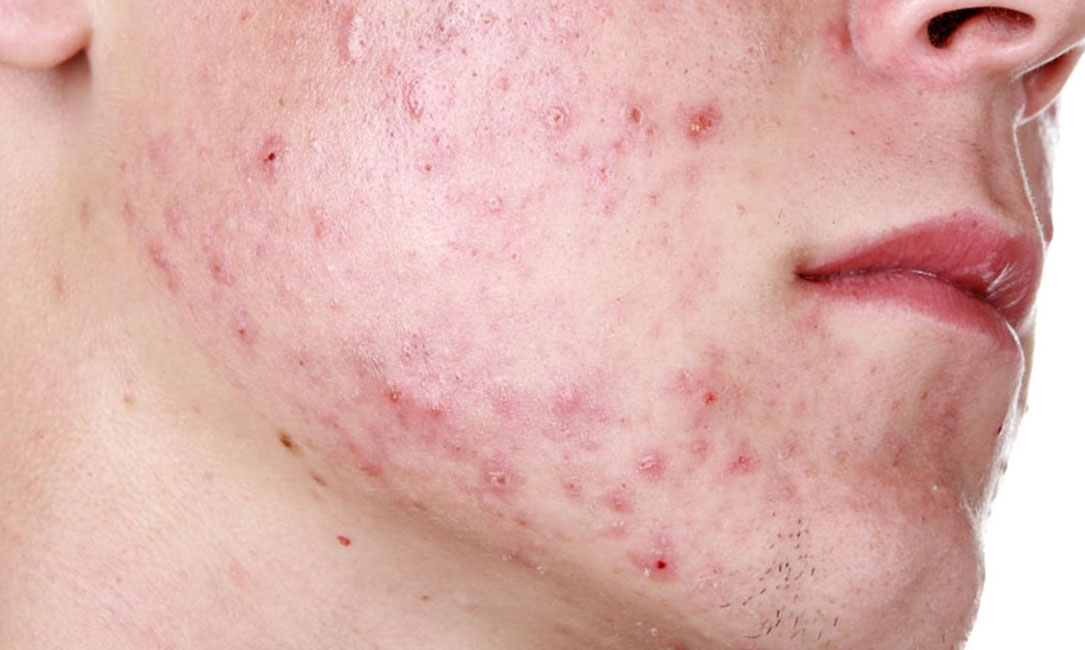ACNE and HIDRADENITIS SUPPURATIVA

Hidradenitis suppurativa (HS) is a little-known disease that causes deep and painful lumps under the skin, usually in the armpits or groin.
Many people mistake the deep lumps for painful pimples or acne cysts. HS can also be misdiagnosed as boils, infected hair follicles (folliculitis), or a sexually transmitted disease.
Because HS is often mistaken for another condition, people can go years without getting the care they need. Some people live with HS for 12 years or longer before getting diagnosed.
Without the right diagnosis and individualized treatment, HS can worsen. What starts out as one or two deep, painful, pimple-like lumps can turn into several lumps. In time, these lumps can break open and leak a foul-smelling liquid. The lumps can continue to return, rupture, and heal.
Patients with hidradenitis suppurativa have a high prevalence of acne vulgaris, research published in Journal of the American Academy of Dermatology shows. Furthermore, the mean age of onset of hidradenitis suppurativa patients is lower when they also have acne vulgaris, the data show.
The prevalence of acne vulgaris was assessed in consecutive new patients with hidradenitis suppurativa referred to the Department of Dermatology at Bispebjerg Hospital in Copenhagen, Denmark.
A total of 302 patients (191 women and 111 men) with a mean age of 39.4 years referred between January 1, 2016 and October 8, 2018 were included in the evaluation.
The overall prevalence of acne vulgaris was 21.2%. Nineteen of the patients with acne vulgaris (29.7%) had hidradenitis suppurativa assessed as Hurley stage I, 39 (60.9%) Hurley stage II and 6 (9.4%) Hurley III. There was no statistical difference in Hurley stage of hidradenitis suppurativa between patients with and without acne.
However, acne vulgaris was associated with a lower age of onset of hidradenitis suppurativa. Those patients with hidradenitis suppurativa and acne vulgaris attending the clinic were significantly younger than those without acne vulgaris (33.8 versus 40.8 years,), and the mean age at onset of hidradenitis suppurativa was significantly lower in patients with acne vulgaris than it was in those without (21.4 versus 27.2 years).
Hidradenitis suppurativa patients with acne vulgaris also had lower levels of plasma inflammatory markers (C-reactive protein [CRP], neutrophils, and neutrophil/lymphocyte ratio [NLR]) than those without acne vulgaris.
Prevalence of acne vulgaris among hidradenitis suppurativa patients was not impacted by the sex of the patient, smoking status, obesity or diagnosis of polycystic ovary syndrome (PCOS). There was also no difference in Dermatology Quality of Life Index (DLQI) and localization of hidradenitis suppurativa between the patients with and without acne vulgaris.
Patients referred for specialized hospital care tended to have a high prevalence of acne vulgaris. Furthermore, hidradenitis suppurativa patients with acne vulgaris tend to have a significantly lower mean age and age at onset of hidradenitis suppurativa compared to hidradenitis suppurativa patients without acne vulgaris. These findings call for greater awareness of this association between acne and HS and for a co-management approach to treatment.
The Danish findings support those of a population-based sample from the United states which found that the prevalence of acne vulgaris was 15.2% among adults with hidradenitis suppurativa, compared to 2.9% in adults without hidradenitis suppurativa.
The US cross-sectional analysis used electronic health records data from a population-based sample of over 55 million patients to identifying adults with acne vulgaris among patients with and without hidradenitis suppurativa.
Prevalence of acne vulgaris in patients with hidradenitis suppurativa was found to be 15.2% (7,315 /48,050), compared to 2.9% (497,360 /16,899,470) for adults without hidradenitis suppurativa. Prevalence of acne vulgaris was greatest among hidradenitis suppurativa patients who were female (16.4%), aged 18-44 years (18.2%), non-white (17.5%), obese (15.5%), and had PCOS (28.7%).
Hidradenitis suppurativa patients had 4.51 times the odds of having acne vulgaris compared to non-HS patients, and the association between hidradenitis suppurativa and acne vulgaris was generally stronger for patients who were male, aged ≥ 65 years, non-whites, and obese.
The association between acne vulgaris and polycystic ovary syndrome (PCOS) is already well established. Recent research has demonstrated that approximately 1 in 11 women with hidradenitis suppurativa also have PCOS. The link among the three conditions is not yet clearly established, as circulating and end organ androgen expression appear to be normal among hidradenitis suppurativa patients.
If you have signs of HS or acne, have your dermatologist examine for both as HS may not be easily recognized by the general public. Dr. Moore’s research team, Arlington Research Center, his screening patients for HS to participate in clinical trials for HS. We also have clinical trials for acne. Contact Arlington Research Center at studies@acderm.com or 817-795-7546 ext. 339 to see if you qualify for an HS clinical trial.
Sources: AAD.org and Dermatology News February 2019







